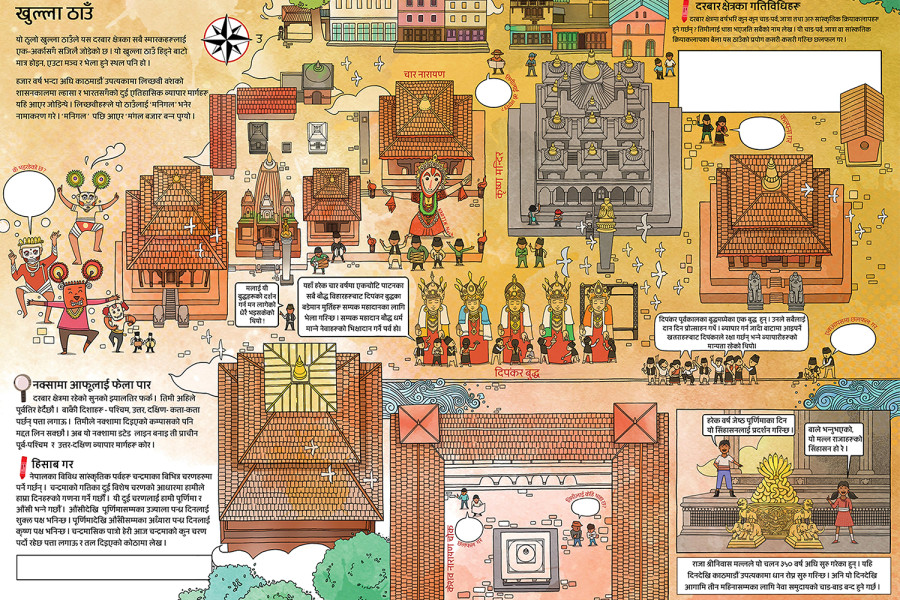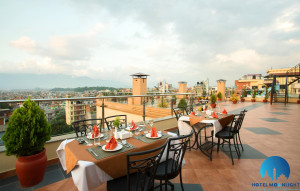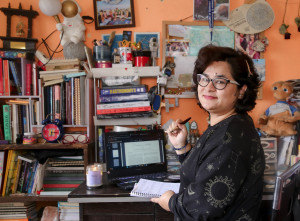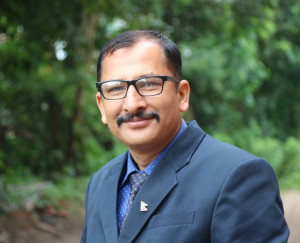Culture & Lifestyle
Palimpsests of history: New ways of seeing, learning, giving
Kathmandu Valley Preservation Trust’s restoration endeavours and innovative education outreach programmes are revitalising Nepal’s heritage, one monument at a time.
Sophia L Pandé
Over the 33 years that the Kathmandu Valley Preservation Trust (KVPT) has been working on the ground, it has restored more than 87 monuments and temples, some 36 after the 2015 earthquake. The Trust has many long-term donors, institutional and across countries and embassies, but domestic donors, the truest stakeholders, are fewer and far between. Aside from the odd corporate donor or wealthy individual domestic funding is hard won, and not at all in proportion to our priceless World Heritage Site status, which includes the rare aspect of a living heritage component; we still worship at these places.
For every artefact outside of Nepal identified by the Lost Arts of Nepal, there are a dozen, maybe even a hundred, objets d’art, and edifices languishing in-country for lack of funding. Stolen heritage rightly causes a furor, but much can be done, more immediately, for the immeasurable, inestimably valuable public inheritance still here at home with support from local donors and crowd-sourced funding.
For this to succeed, civic and cultural education, starting at a school level, from the very smallest child, is essential. Without respect for everything (property, private or public) and everyone around us, across gender, ethnicity, age and class, and a nuanced understanding of the tangible cultural heritage that encompasses us, transcending our differences, compounded by the inextricable link between our living monuments and our intangible cultural heritage, Nepal as a whole will continue to struggle to restore and preserve its cultural wealth, not just in the Valley, but also across its length and breadth, in Mustang, Tilaurakot, Janakpur, Palpa, Sinja Valley, the list goes on.
With this in mind, the KVPT’s education outreach programme was founded in 2017, and free school tours began for the first Let’s Discover Patan map, in Nepali and in English. Even in its first iteration, funded from within the organisation itself, and covering the three main, grand Chowks of the Patan Durbar complex, the map was unique in the way it used a conversational, back and forth, immersive method of teaching the user how to observe and think about the history underscoring the exquisite detail and elegant structures of these stunningly beautiful Chowks, demonstrating, visually, how such locations have been built up over generations and centuries by diverse sets of hands. Participants across the board, young and old, Nepali and foreign, have been captivated by the information in the map, and the way it is presented, beautifully illustrated by the talented artist and illustrator Suman Maharjan.
Over the years Rishi Amatya, writer and researcher extraordinaire has provided reams of painstakingly detailed material to sift through to construct each map, and thoughtful, experienced education specialist Sharareh Bajracharya has shored up the maps’ activities, ensuring that while each task is engaging and fun, it is also honed to show the user how to learn things anew.
Each map has provided learning for the subsequent one, carefully guided by the vast historical and architectural experience of KVPT’s Programme Director, Dr Rohit Ranjitkar. The success of every map determines the funding for the next, and the Trust aims to cover all of the Patan Square and palace grounds and then move on to other important sites in the Valley, for a comprehensive effect.
These maps and the programming surrounding them show that much can be done with creative, careful planning, even on a small budget. The Trust conducts outreach, targeting those schools and students that may not have had a chance to engage first-hand with these venues. As a valuable programme partner, the Patan Museum staff are trained by the Trust as guides to help conduct the map tours, when students come en masse; the Museum thoughtfully provides free entry to all students. To date, the maps have reached over 7,000 users, most of whom are government school-children.
The current architects of Nepal’s education system are aware of its lack in terms of the incorporation of unconventional learning techniques, arts education, the study of culture, acceptance of diversity, civic-mindedness and its corollary: conservation, and with it, the importance of intangible cultural heritage. Attempts are being made to address these gaps, but in the meantime, the school-children of today and yesterday have already lost their chance at a different, inclusive kind of learning.

Anyone with a decent education knows that critical thinking and problem solving are essential life skills, that rote learning doesn’t serve, and that a good teacher is willing to answer even the most precocious questions, but helplessness, apathy and inertia are all present in an education system that resists progressive evolution.
However, with a real will to give Nepali children, from east to west, north to south, a chance at competing in an ever globalising world, one needs-must create careful, sensitive programming, in whatever way possible. Anyone who has ever taken the interactive tour, teacher, student, or lay-person, has walked away with a completely altered sense of the importance of diversity, responsibility, history, culture, art and architecture and the new possibilities and invigoration that comes from a truly thoughtful, inclusive learning module.
For instance, the second map, funded by the New Zealand High Commission, covers among others, the ancient, historic Mani Dhara, teaching users about the Valley’s vital water systems and traditional building materials even as they learn and reflect on the importance of public infrastructure. This third map, so generously funded by the American Embassy, examines, in detail, the layers of history that have gone into the making of the Keshav Naryan Chowk, just inside the entry to the Patan Museum, as well as the iconic Krishna Mandir and the Char Narayan Temple, the oldest temple in the Square.
Despite the impact of each map, and the cutting edge learning tools developed for each, donors domestically are non-existent. The Trust hopes that each user, child, tourist and teacher reached via the maps will be engendered with a sense of deep connection to culture and heritage that will eventually circle back, in whatever kind and that the exposure to new learning techniques will open up horizons on what can be possible with a creative, innovative, cross-disciplinary approach.




 8.12°C Kathmandu
8.12°C Kathmandu















